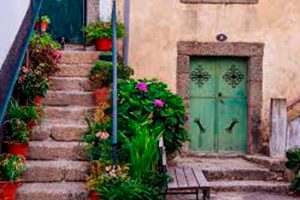
Vale Formoso
Twenty-two kilometers from the county seat, the parish of Vale Formoso is located in the northeastern part of Covilhã, at an altitude of over five hundred meters.
It is a remote village, having been found here several vestiges from the Roman period, which prove the early human settlement in these beautiful lands. They are the remains of a sidewalk that connected Vale Formoso to the Tower of Centum Cellum.
Until August 6, 1949, the parish was called Aldeia do Mato, from that date on, it was renamed Vale Formoso due to the desire of the municipality, which saw in the previous designation a qualification not in keeping with the development of the land. In administrative terms, it belonged to the municipality of Valhelhas until April 24, 1855, then, due to its extinction, it passed to Covilhã.
Aldeia do Souto
The name of the parish is of botanical origin and comes from the abundance of chestnut trees or chestnut groves in which the region was fertile, which, attacked by disease at the beginning of the century, were reduced in number, however, according to Dr. Alexandre Carvalho Costa in Legends, Histories and Popular Etymologies and Ancient Etymologies concerning Cities, Towns, Villages and Places of Mainland Portugal, says: “Aldeia do Souto – must in fact mean a plowed “village” (in the sense of agrarian territory) in The ancient meaning was (and still has not disappeared completely, at least literarily) that of the forest of any wild trees”. Other authors, however, do not agree with this thesis.
Patrimony (Vale Formoso)
Church of Santa Ana (main)
Chapel of Our Lady of Health
Old Fountain
Community oven
Manueline windows
Viewpoint
Castro da Aldeia do Mato
Castrejos traces of Redadeiros Castles
Remains of roman pavement
Remains of the Roman villae of Vineyards of olive grove, Quinta de Cinque and Mortórios
Patrimony (Aldeia do Souto)
Chapel of St. John the Baptist
Maria Janeira and Biquinha fountains
Remains of Roman villae at Quinta da Lajeosa and Raro
